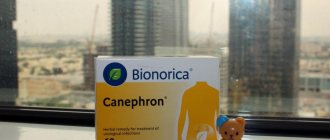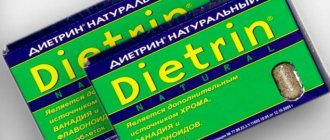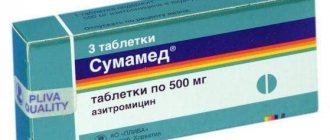In human psychiatry and narcology, there are medications that have a sedative and hypnotic effect. These include phenazepam, which is a tranquilizer.
Its action is due to its central influence on the nervous system (in particular, on the structures of the human brain). If a dog becomes violent and suffers from insomnia, owners sometimes want to share their medicine with the pet.
Is it possible?
Attention! Phenazepam is an unsafe drug, and therefore its use is strictly limited, and its dispensing from the pharmacy network is carried out strictly according to the prescription of a qualified specialist.
Phenazepam is a prohibited drug for use in animals. The thing is that it is extremely dangerous to the health of the dog and very often leads to death.
This is justified by the fact that small dosages often have no effect on the dog, and giving large doses is dangerous.
Phenazepam overdose: signs, consequences
Phenazepam is one of the most powerful tranquilizers, used to eliminate severe forms of psychosis, phobias, neuroses, panic attacks, alcoholic delirium, and convulsive syndromes. The drug is used exclusively as prescribed by a doctor and under his supervision to avoid the possibility of complications. The most dangerous thing in therapy is non-compliance with the amount of medication.
An overdose that occurs after taking large doses of Phenazepam tablets can cause the death of the patient.
The active substance of Phenazepam is a substance of the same name from the group of benzodiazepines.
It has an anxiolytic, anticonvulsant, antiphobic, hypnotic and sedative effect on the body by affecting the sensitive receptors of the central nervous system.
The substance has a very high absorption rate, so it begins to act very quickly - 15-20 minutes after administration. The maximum level of phenazepam in the blood is formed after 1-2 hours. Phenazepam stays in the body for quite a long time, the half-life lasts from 6 to 18 hours.
Metabolic transformation of the substance occurs in the liver with the formation of metabolites. It is excreted from the body by the kidneys over a long period of time.
The duration of the presence of Phenazepam in the urine depends on the individual characteristics of the body.
After a single dose, withdrawal of the drug takes from 2 to 2.5 days, with long-term treatment - on average 7-8 days after the last dose.
According to medical data, a significant part of the drug (up to 97%) is eliminated within 72 hours.
Question of dosage
How many Phenazepam tablets a particular patient will need for treatment is determined by the doctor in strict accordance with the diagnosis, the condition of the patient’s body, the presence or absence of concomitant diseases and internal pathologies, and age.
On average, to eliminate insomnia, it is recommended to take ½-1 g of Phenazepam half an hour before bedtime; when treating withdrawal symptoms due to alcoholism and drug addiction, 2.5-5 mg of the drug is prescribed. Patients suffering from epilepsy require from 2.5 to 10 mg of drugs, distributed over several doses.
In very complex cases, with some psychiatric pathologies, such as depersonalization, etc.
phenomena, it may be necessary to use large dosages of Phenazepam, which can provoke unwanted reactions, and if taken incorrectly, an overdose.
In addition, the medicine itself is difficult for the body to accept and contributes to the formation of a suicidal mood in the patient. The tendency to commit suicide while taking Phenazepam and attempting to commit it is one of the main dangers of the tranquilizer.
Therefore, even a slight excess of the prescribed dosage is extremely dangerous for the life and health of the patient. Just one single dose of 10 mg of the drug can cause severe intoxication with a fatal outcome.
The lethal dosage of Phenazepam is individual for each person, since in this case it is necessary to take into account whether the patient was taking other medications or alcohol. On average, we must assume that the critical amount for an adult is 0.5 mg/kg, for children – 0.25 mg/kg.
To prevent a fatal scenario, it is necessary to carefully control the amount of the drug used. The drug should not be taken together with alcohol or alcohol-containing medications, as ethanol enhances the effect of the drug. In this case, even the use of the required dosage of the drug can cause severe intoxication with subsequent death.
Signs of an overdose of Phenazepam
Poisoning with Phenazepam manifests itself with varying intensity, depending on the magnitude and duration of excess dosage. All stages of intoxication are characterized by respiratory and heart failure, excessive salivation, and the formation of sputum in the respiratory organs. Conventionally, several stages of overdose can be distinguished as they progress and intensity:
- It is characterized by confusion caused by the narcotic influence of the drug, followed by drowsiness and deep sleep. Subsequently, patients experience hearing impairment, eye movement disorders, voluntary eye twitching, and drooping of the upper eyelid. In some patients, muscle tone and tendon reflexes may be weakened. With this form of overdose, the patient is conscious and reacts adequately to others.
- Poisoning manifests itself as a superficial coma with loss of consciousness. The patient develops muscle hypotonicity, lack of pupillary response to light, and tongue retraction. Vomiting is also possible, which is dangerous, since if it enters the respiratory tract it can cause death.
- Chronic form of poisoning. It is characterized by anxiety, insomnia, nausea (with or without vomiting), and abdominal pain. Also possible: convulsive syndrome, pathological trembling of the torso and limbs, increased agitation, hallucinations. A drug overdose is often fatal.
- A severe form of intoxication is manifested by the absence of reflexes and the development of coma. The patient experiences dilated pupils, severe respiratory distress, cardiac arrhythmia, and a strong decrease in blood pressure and body temperature.
How to eliminate an overdose
The first task in case of suspected overdose is to immediately take measures to detoxify the body from the drug. Determining how to remove phenozepam from the body depends on the intensity of the symptoms and the capabilities of those around you.
If the patient is not in the hospital, then the most correct decision would be to take him to the clinic as quickly as possible. If this is not possible, then you should definitely call an ambulance, and before it arrives, try to help on your own.
If the victim is conscious, then it is necessary to cleanse the body of drug residues by inducing vomiting. For this, a slightly pink solution of potassium permanganate is used, but in an unconscious state it is dangerous to use such a method, since the victim may choke on the masses. Therefore, it is necessary to rinse the stomach with a probe. To speed up cleansing, an enema is allowed.
All this time, you must try to keep the victim conscious, preventing him from passing out: patting his face, shaking him, letting him sniff ammonia.
After removing the remaining Phenazepam, the patient is given activated charcoal. During the procedures, it is necessary to monitor the state of breathing and heart function.
In severe cases of overdose, the antidote of the drug is used - Flumazenil solution, but only doctors can administer the medicine in a hospital setting. The medication neutralizes the sensitivity of benzodiazepine nerve endings, thereby eliminating the danger of the pronounced sedative and hypnotic effects of Fenozapem.
At the same time, supportive therapy of the heart and respiratory system is prescribed. Hemodialysis is usually not used due to its ineffectiveness.
Consequences of overdose
Intoxication with Phenazepam poses a serious threat to the health and life of the patient. Drug poisoning often triggers a mechanism for further complications in the form of other diseases. The most dangerous are:
- Respiratory damage
- Inflammatory processes in the genitourinary system
- Mental changes
- Pathologies of the liver and kidneys
- Serious damage to brain cells
- Gastrointestinal diseases
- When immobile, bedsores occur.
The occurrence of any pathology after tranquilizer intoxication will require serious treatment.
Phenazepam is a serious drug for eliminating complex conditions, and therefore must be treated with caution. Any non-compliance with treatment conditions can lead to death of the patient. Therefore, it is very important to take the drug in the prescribed amount, not to exceed it and to monitor the peculiarities of combination with other medications.
Source: https://lekhar.ru/lekarstva/preparaty-dlja-nervnoj-sistemy/fenazepam-peredozirovka/
In which cases?
Important! Veterinarians never prescribe this drug to animals.
Some volunteers may resort to using this particular medication if the dog is afraid of:
- transportation;
- go to a person;
- He is very worried about meeting his new owners.
Important! In such cases, it is better not to use Phenazepam just like that. As a rule, it is used when the pet has experienced severe emotional shock in the form of people bullying the poor fellow.
What happens if it is exceeded?
Unfortunately, this situation is not uncommon. Very often, owners and volunteers overdo it with the medicine. They don't do this out of malice. As noted earlier, the dose per 10 kilograms of animal body weight is extremely small, as a result of which it is very easy to make a mistake.
Important! You need to understand that the central nervous system of each dog has a strictly individual sensitivity to various anxiolytics and other neurotropic drugs.
So, one of two dogs with the same body weight (to simplify the example, let’s take dogs weighing 30 kilograms, for which 1 tablet of phenazepam is needed) will not have any reaction, while the second may fall asleep and never wake up again.
If the owner finds that the dog has fallen asleep after taking the drug, has become weak, “limp”, and hangs “like a sausage” in his arms, he must immediately take him to a veterinary doctor for gastric lavage and detoxification therapy.
As a rule, an intravenous infusion is performed with an isotonic sodium chloride solution to “dilute” (reduce the concentration) of the toxic substance in the bloodstream).
Types of Antihistamines
The choice of antihistamines for the treatment of allergies in animals is extensive.
Manifestation of allergic dermatitis
For this purpose, antihistamines are used for cats of one of three generations. They differ in the degree and speed of impact, the presence or absence of adverse reactions.
First generation drugs
First-generation allergy medications are the least safe in terms of the possible side effects (negatively affecting the functioning of the cat’s central nervous system), but the most effective in situations where it is necessary to immediately eliminate allergy symptoms (tearfulness, sneezing, coughing).
The group of drugs under consideration includes:
For your information! The duration of exposure to the body is average. One dose of the medicine is enough for 4-6 hours. To achieve a long-term effect, the dose is increased to the maximum possible (this is done exclusively under supervision and on the recommendation of a specialist).
Second generation drugs
Second generation drugs do not have a negative effect on the nervous system, but their use negatively affects the functioning of the heart. Most often, fenistil, loratadine or kestin are used to treat allergies in kittens and adult cats.
Important! The choice of medication does not depend on the breed. Sphynxes, Persian, Siberian and ordinary yard cats are treated the same way.
Third generation drugs
Modern drugs that have virtually no negative effects on the body. Due to this, as well as the ability to have a positive effect over a long period of time, third-generation drugs are prescribed in minimal doses. If necessary, treatment is repeated. The most effective drugs are:
- cetirizine for cats;
- fexofenadine.
They are safe for both the central nervous system and the cardiovascular system.
Note! The antihistamine is chosen by the veterinarian after examining the cat, studying the results of blood, urine and feces tests, and information about the cause of the allergic reaction.
This is the main condition for ensuring a speedy recovery of the animal.
Reviews
Owners
1. “I somehow had the imprudence to leave phenazepam tablets on the table. When I returned home from work, I discovered that my Almaz (a Welsh Corgi Cardigan breed) had gotten to them and tore the packaging. I counted the pills and there were as many as 8 missing! My Diamond was sleeping in his bed (thank God he was sleeping!). I couldn't wake him up.
I decided to check my breathing. There was a phone at hand. Diamond’s weak breathing caused the screen to fog up slightly. For a split second I was glad that my friend was still alive, grabbed him in my arms and immediately rushed with him to the clinic. The doctors took him away and asked him to wait in the waiting room, since the outcome was unknown and so that I would not cause panic.
After much suffering, they were able to bring my friend back to life! I left him in the hospital just in case, so that the doctors could keep an eye on him. The next day Almaz recovered and I took him home. I don’t leave any more medicine in places accessible to such a lively creature, especially phenazepam!”
2. “I’ve been volunteering for 15 years. Once upon a time there was a case. The only tranquilizers available were phenazepam, and I needed to catch a stray dog for foster care, since we have a very cruel trapping in our city.
I mixed the tablet into the pate and left it near her hiding place. She didn't notice the medicine and ate it. Well, what can I say... fortunately, she was no longer in danger of being caught. Unfortunately, so do the new owners. Since then I have only used diphenhydramine or veterinary stop-stress.”
Veterinarians
“In my practice, many dogs were poisoned with barbiturates, including phenazepam. We prohibit all pet owners from using it as it is extremely dangerous for their pets.”
“My colleagues and I try to immediately select some herbal remedies, and only then, if they are ineffective, we give medicines from the veterinary pharmaceutical network.”
Causes of allergies in cats
Cats and cats can suffer from both seasonal and permanent rhinitis. The antiallergic drug Zodak is suitable for treating cats and even some breeds of dogs that are prone to allergic reactions. The following pathogens can provoke them:
- insect bite (flea, tick, bee, mosquito) on the animal’s nose, ear, paw pads;
- fungi, helminths, viruses and bacteria;
- pollen, herbaceous plants, shrubs;
- change of feed; certain food; food products: poultry, beef, yeast, eggs, fish, fish oil, soy, wheat, dairy, corn, vegetable oils;
- dust, tobacco smoke in the house;
- household chemicals, aerosols, perfumes, shampoo, soap;
- synthetic fabrics;
- tray filler;
- veterinary drugs, medicines;
- fur of other animals;
- rubber and plastic toys.
When a cat is sensitive to one or more of the above allergens, then painful allergy symptoms appear. Zodak helps with all signs of allergies, which manifest themselves in the form of rashes and spots on the skin, debilitating skin itching, scratching until it bleeds, wounds and hair loss, difficulty breathing, swelling of the mucous membranes of the tongue, larynx and suffocation, discharge from the nose and ears, malfunction intestines and vomiting.
The causes of allergies in cats, as in other animals, are a hypertrophied reaction of the immune system to foreign substances, which are not dangerous in themselves.
That is, these are not bacteria, viruses or toxins, but substances and objects that surround us in everyday life: dust, wool, pollen, food.
Normally, the cells of the immune system do not react to them, but in case of allergies, they perceive them as pathogenic agents and react accordingly: the body tries with all its might to remove the allergen.
The most susceptible to allergies in cats are the skin and mucous membranes. If in humans allergies are primarily associated with sneezing, nasal congestion, and red eyes, then in cats the main sign of allergies of any etiology is itching and scratching of the skin.
Depending on the type of allergen and the way it enters the body, allergies are distinguished:
- Food - for certain types of meat, fish, components of prepared feed.
- Respiratory - for inhalation of dust, pollen, cat litter, etc.
- Parasitic - on the saliva of fleas and other blood-sucking insects.
- Chemical - for shampoos, detergents, etc.
- Contact - local skin reactions at the site of contact with a foreign substance.
What to replace it with?
You can try to replace the tranquilizer with any sedative. For example:
Cat Baiyun. Despite the name, veterinarians sometimes prescribe it to dogs, after adjusting the dose. This product is made only from herbal ingredients and does not harm the health of your pet if he is not allergic to the components of the product.
Stop stress for dogs - tablets with sedative properties. Calms the dog's nervous system. They do not have a hypnotic effect. Available in different dosages for dogs of different body weights.
If your dog is extremely aggressive, you can try giving him a tricyclic antidepressant ( amitriptyline ).
How to use
If the doctor nevertheless prescribed this remedy, it is important to read the instructions for the drug very carefully. Any treatment of a cat with Phenazepam should be meaningful. Of course, in no case should you increase the dose of sleeping pills on your own. The remedy is used immediately before a stressful event. The drug is available in tablet form. Only a veterinarian should tell you exactly how many mg a pet needs . The medicine must be crushed and mixed with food or placed on the root of the tongue.











